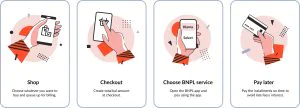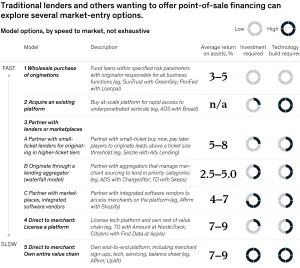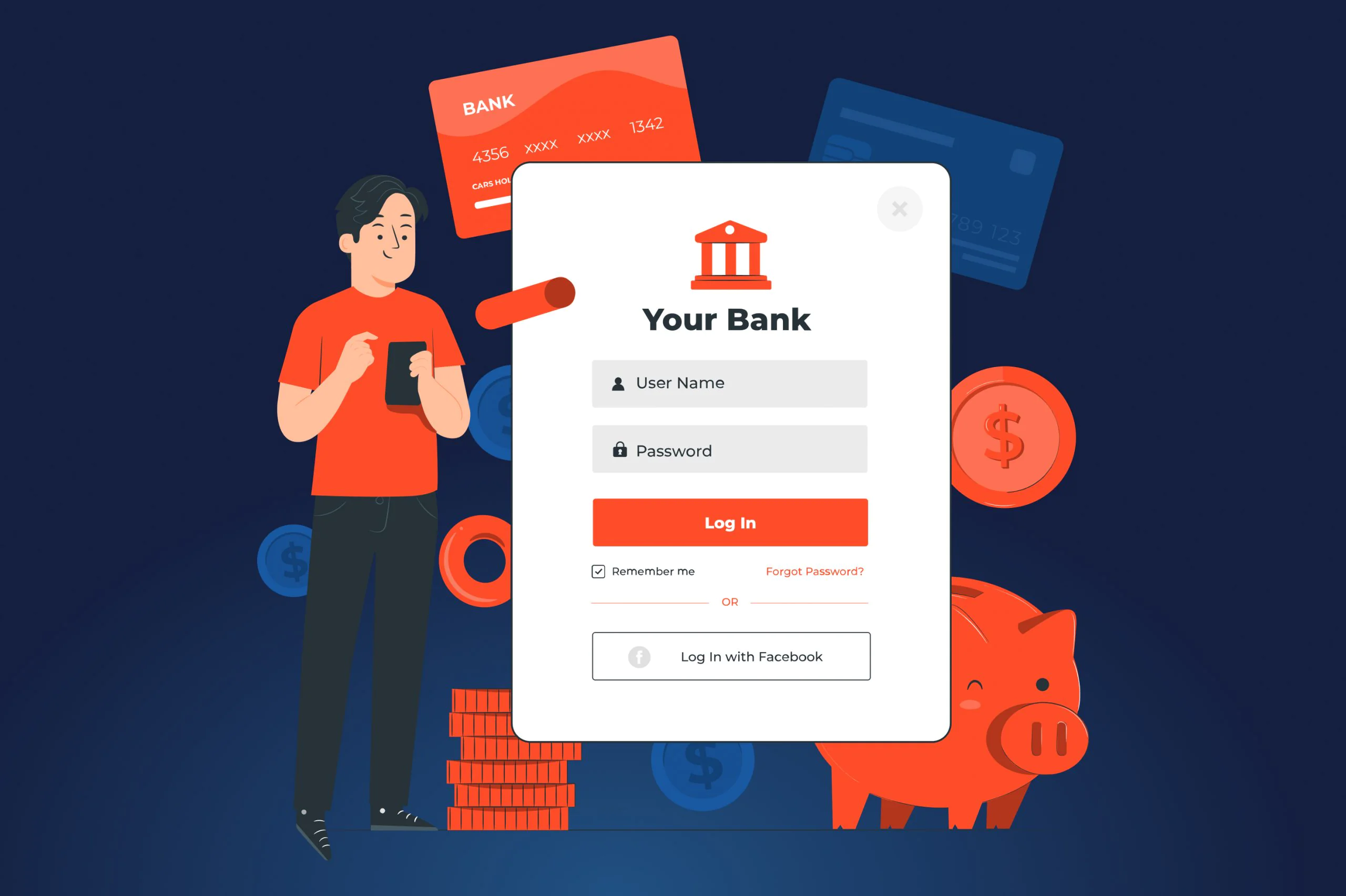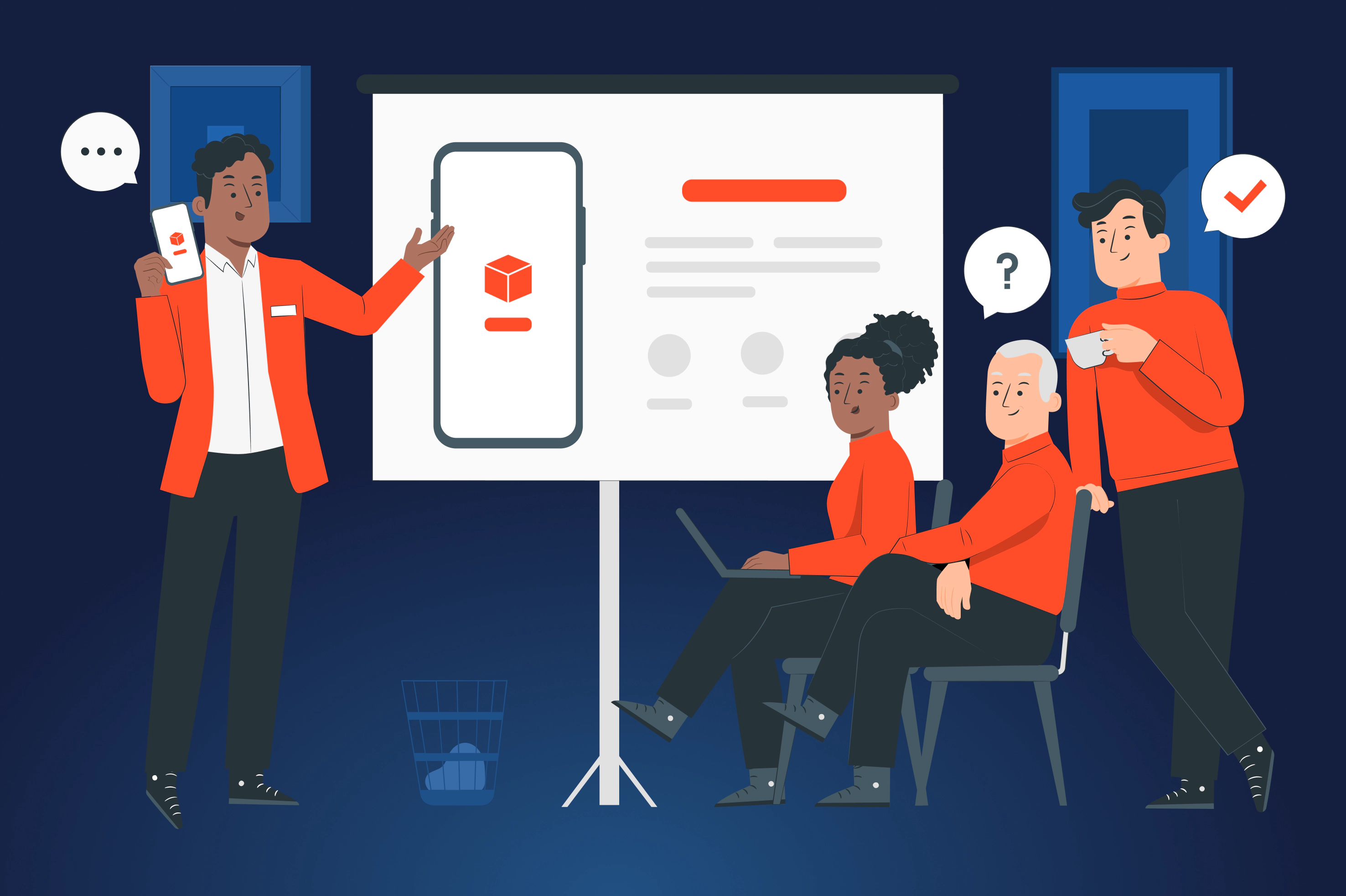Solving a Rubik’s cube puzzle is a tricky process. On the one hand, what can be simpler than arranging blocks of similar colors in rows and columns? But on the other hand, there are many rules and principles you must follow. And just imagine how challenging it can be to solve this puzzle under time pressure.
Same things can be said about running a buy now pay later (BNPL) technology. It sounds like a no-brainer: your solution enables people to pay for a particular product or service now, and they will pay for the purchase later. However, by starting a BNPL business you have to solve a Rubik’s cube puzzle. A successful BNPL service manages to pick up a valid business model, comply with emerging legal requirements, and create a full-fledged tech ecosystem to make the whole business fiercely compete in the market. The rivalry is getting brutal: McKinsey reports that point-of-sale (POS) financing will grow by 20% in 2023, as 60% of the US consumers are willing to use BNPL service at least once in the next 12 months, while such behemoths like PayPal and Apple have come into play.
For that reason, the JatApp team is happy to introduce you this article, which will help you to pin down all important intricacies of buy now pay later apps.
Is BNPL really that tricky?
Buy now pay later concept may seem to be way too plain. A consumer wants to purchase a product or service, selects a BNPL option at a merchant’s site, has their creditworthiness softly checked (some services don’t do this at all), and gets the product/service without paying any money upfront. Then, a consumer has to make 4 (sometimes 3 or 6) payments within a particular period such as 1, 3, 6, or, less often, 9 months. There are little or no interest free installments — a generosity the world has never seen before!
And how do you benefit from this process of almost pure altruism? You charge merchants and retailers a percentage or fixed fee from every purchase users make with your buy now pay later app. Merchants have a constant flow of customers, and your business earns you money.
If everything is that simple with buy now pay later technology, the article would end here. But it’s too good to be true: there are many questions hanging over your head unanswered. Where do you integrate your buy now pay later app? How do you trust your customers making payments? What does the government think about BNPL? And after all, what technology do you need to get all these things to work like a well-oiled machine all the time?
That is why it makes sense to keep reading the article: we’ve scouted the road towards building a quality buy now pay later app, so follow us!
Business models of different scale: from a shopping app to a vertical market
The first thing you need to realize is that BNPL service doesn’t exist in vacuum, which is why you have to find an environment where your service will live in a perfect symbiosis with other financial products, e-commerce platforms, mobile apps, and such. Below, you can find 5 major buy now pay later business models that work with different business environments from trendy superapps to niched product markets.
POS financing business models
Shopping superapps
You can integrate your BNPL service with a superapp. What does it mean for your business? Superapps are mobile applications that involve a wide range of services rolled into one product, like shopping online, payments, insurance, social networking, to name a few.
Since superapps offer such a long value chain, you can add one more profit-generating layer to a superapp equation. The app owner will enhance their product’s user experience (UX) while you have direct contact with merchants, retailers, and fintech companies.
Consumers use superapp-native BNPL for small purchases, not more than $250 at a time, according to the McKinsey report we’ve covered earlier, which is why you won’t have a big credit portfolio. Instead, your overall return on assets will surely range between 25-30% thanks to a number of transactions, their frequency, and low associated costs.
Off-card POS financing
You can offer off-card financing: consumers will pay monthly installments with no or little interest fee, but they don’t need to use a credit card to buy a product with your BNPL. Usually, such POS financing services focus on midsize purchases between $300 and $3000.
There is no need to worry about creditworthiness of this consumer group, as 80% of people using off-card financing have debit cards with enough credit available to pay out the purchase price and the interest fees. This BNPL business model is literally stealing the thunder from conventional loan providers, as 65% of consumers who use off-card POS financing also have a positive credit history.
And merchants aggressively crave for integrations with off-card POS financing services to decrease customer acquisition costs. We recommend you to aim your BNPL business at merchants in such markets as travel, healthcare, home appliances, furniture, entertainment, and so on. These markets have a high customer acquisition cost, so merchants will line up to cooperate with you.
On a side note, you may nod towards old good brick-and-mortar stores that are actively adopting off-card POS financing. In fact, up to 30% of purchases made with off-card BNPL services were made at physical stores in 2021.
Virtual rent-to-own
Rent-to-own model is as old as the world, but you can augment it with your digital solution. It will work in the same classical fashion: consumers pay a rent for a product for a particular period in order to buy it out in the end.
Such BNPL services usually aim at underbanked populations with a low credit score. The markets rent-to-own BNPL can easily penetrate to relate to products that can be repossessed, such as furniture, home appliances, and gadgets. It doesn’t necessarily mean that this type of buy now pay later business model doesn’t expand on other types of products though.
Card-driven POS
You may not bother yourself with inventing a new business model and just launch an embedded loan service. Consumers will make monthly installment payments and interest fees just like they’ve taken a loan in an incumbent bank.
The advantage of a card-linked POS is convenience and almost immediate approval of purchase. You can expect to earn more capital as an average ticket is as high as $1,000, which means you can afford integrating the services with big merchants and promote it on all levels of customer journey. Many merchants advertise such services on their landing pages and social media, while your job is to make the service work fast and hassle-free.
How it works
You will find your target audience one way or another. Still, this buy now pay later business model can hardly compete with pay-in-4 BNPL products or off-card POS services.
Vertical and high-ticket niches
If you want to go whale hunting, this buy now pay later business model is for you. It is really difficult to say how exactly you can earn money with this model as earning interest and charging merchants can be both attractive and insanely risky at the same time.
Working with high-ticket BNPL requires experience in banking, loans, and sales, while a deep knowledge of the vertical industry you’re dealing with is a must. The ways you approach the healthcare services market and equipment for heating, ventilation, and air conditioning (HVAC) are dramatically different. Our mission here is to say that high-ticket market niches require their own POS financing services, even though your target audience is able to afford expensive products without using your service.
The matter is that people with a high credit score may use BNPL for their business purposes or more effective use of capital. You have to find a narrow-specific approach to setting up your BNPL service to add value beyond instant financing.
Trends forbidden to ignore
As soon as you’ve picked up a business model for your BNPL service, you have to keep an eye on what’s going on within the POS financing industry in order not only to catch big opportunities, but also to win the fierceful competition.
Presence across the entire customer journey
To make your buy now pay later app succeed, you should tell consumers about it as early as possible, otherwise they won’t know that there is such an option for them. Shouting out loud about your service across the whole customer journey increases your chances to attract more users.
We’ve already mentioned that merchants are eager to tell their customers that they have a buy now pay later payment option at their landing pages, social media, and ads because fast payments are becoming an integral part of marketing today. To follow this trend is not a hefty task for you, as you just have to knock at a merchant’s door and say you are here to provide their consumers with buy now pay later service.
Once merchants are aware of an easy way to acquire more customers, brands don’t stay aside like a wallflower and jump into the action as well. When you have a robust buy now pay later app that can integrate with marketplaces, e-commerce platforms, and brick-and-mortar stores, it makes sense to engage with brands directly for building special offers for their customers.
Brands have loyal customers who come back many times. As a result, you’ll have a constant stream of users who will be delighted to purchase goods of their favorite brands fast and easy.
Standalone BNPLs will fail
You can see that buy now pay later apps need a merchant platform to cater to. This tendency is becoming a survival rule, so we recommend you to think in advance what platform, service, or brands you’ll make your BNPL service anchor with. Check the chart below to see the options of integrating BNPL within the customer value chain.
B2B rise
Businesses need financing as much as ordinary people. Small and medium-sized businesses lack liquid capital to manage their operations and gain profits. That is why giving firms enough money upfront is an idea that attracts many BNPL providers.
A startup OatFi secured $11.25 million to explore the niche of B2B financing by means of BNPL provider. The company doesn’t intend to work with small businesses to power their sales by offering BNPL options to the consumers. The aim of OatFi is to create an end-to-end connection between a financing provider and businesses that are underbanked.
The example of OatFi is inspirational enough, but we have to warn you that you should come up with a reliable process of financing and payouts, once you’re going to lend large amounts of money. To say the least, your BNPL system will need to check the basic financial health of a client’s firm.
Long-term competition
We have Klarna and Afterpay dominating the BNPL industry, while PayPal and Apple broke into the fighting cage all of a sudden. Does it mean you shouldn’t dare to hit their big backs with a steel chair?
Well, yes and no. You shouldn’t do this because you won’t get the desired effect, as Big Techs will keep brawling without paying any attention to smaller fighters. That’s why tapping the same markets is apparently risky.
You should fight, however, because you have hundreds of markets and submarkets or even separate trademarks to work with. If you know some type of product or service well enough, you should glue your buy now pay later app to it because you have a deeper understanding of customer journey and buying behaviors of the relatable consumers. But big companies are here to stay, as well as the competition, so roll up your sleeves and prepare to fight!
Regulations and other things that make a mess
Picking a favorite business model and grasping ongoing trends bolster your BNPL business in many ways, while there are things you have to manage because they spoil the party. Let’s discuss them.
Compliance with legal requirements
Regulations are the main party pooper. Governments have watched BNPL providers long enough to conclude that it is financial services whatever you call them. You have to comply with loan transparency regulations, adequate penalty terms, and personal information security.
What’s more, once BNPL is a digital POS financing service, you have no choice but get certified for PCI DSS standards that are an absolute must for any fintech product today.
The best way to cope with these hurdles is to hire fintech developers who have experience in building PCI DSS compliant products. Tech talent scarcity is another challenge you have to face, but you can always count on software vendors overseas and outsource your product development to them.
Commoditization
For now, BNPL is a combo breaker against incumbent bank account loans. But BNPLs are risking to become incumbents themselves one day. A meteoric rise of the popularity with consumers implies that people will mostly pay for products and services with BNPL providers.
First of all, your business won’t be that special and you’re likely to lose some part of your customer base in the long-term. On top of that, the economy will shake up a bit because many people will get goods and services without paying anything. We don’t say that the global economy will collapse, but such crazy popularity of buy now pay later apps will leave its cannibalizing footprint on the consumer sector of domestic economies.
Both scenarios aren’t good, and you should be prepared. After all, building solely BNPL service does not promise any satisfactory result even today. We can’t predict what the future holds for BNPL, but you definitely need to think about the ways you will scale and transform your service, in case we enter the world where you can buy a street hotdog with a BNPL provider.
Addictive power of BNPL and lack of consumer financial literacy
We’ve just explained that buy now pay later apps are getting popular, and their addictive power is one of the reasons for that. When a person gets something without paying instantly, they lose a sense of spending money. That’s how our greedy side works.
People get purchases they don’t really need or what’s worse can’t payout even in the long term. Consumerism already contributes much to growing economic disparities and slow killing of the planet. You have to think about the ways you can reduce your impacts on social justice and the environment.
Several startups already do that. For instance, Kasheesh doesn’t promote reckless consumerism. Instead, the startup offers a smart approach. The majority of users have dozens of shopping cards, discount coupons, promocodes, and other similar things. The startup’s solution collects data about all discounts and offers available and connects all user’s credit cards within one buy now pay later virtual card.
In such a way, a consumer doesn’t have to enter that BNPL loop, once they have enough credit assets and discounts to afford a desired product without committing to any pay-later yoke placed around their necks. In addition, the company provides users with free education in financial literacy, thereby promoting conscious consumerism.
If you want to stay in one pack with BNPL providers, you can do a so-called save now pay later service. Accrue Savings offers brands to integrate savings features in their online stores. Customers get notifications about discounts and special offers via browser, email, and SMS. As soon as a user reaches a particular savings milestone, they can convert them into one more purchase. Brands retain their customers, and consumers make their spendings optimized while the startup charges brands for such fruitful cooperation.
Technology that will clean up the mess
To avoid the majority of roadblocks we’ve described, you need to adopt several technologies:
- Real-time checks. Your service has to verify whether a customer isn’t a fraudster and will pay out the purchase within the terms you oblige them to agree with. Aside from basic user authorization, you need to adopt the Know Your Customer (KYC) tool as well as an anti money laundering solution.
- Payment gateway. Since you cooperate with merchants, you need a payment gateway of your own. There are many companies that offer connecting e-commerce/fintech platforms to a third-party payment gateway, but it will visibly increase your recurring expenses and expose data security. Instead, we recommend you to act in the way one of our customers did. They developed their own payment gateway with JatApp. The company got a safe, PCI DSS compliant solution that significantly reduces money transfer costs.
- Automation. Dozens if not hundreds of transactions may run within your BNPL system in one second, and automation of all processes we describe here is vital. Apart from setting up smart algorithms to manage your solution that buzzes like a large hive, we can recommend you develop each process as a microservice to avoid data overlapping and wreckage of the whole system when one of the services halts.
- Reporting system. Compliance with legal regulations is inevitable. Under these circumstances, effective and real-time reporting is necessary for your buy now pay later app. You can embed artificial intelligence (AI) here, but the governments and our company don’t recommend you complicate things too much. Just bear in mind that you have to work on your reporting system that is plain enough to enable your BNPL service to generate financial/accounting reports.
- Alternative credit scoring/Application programming interfaces (APIs). Many BNPLs don’t do credit checks of their customers because they don’t want to spend extra resources on data pooling and reporting to credit bureaus. But you need to ensure that your customers are really capable of paying out the debt, right? You’ll need an alternative credit scoring system or at least separate APIs connected to major banks, social media, or streaming services to conduct a soft creditworthiness evaluation.
Find and hire an IT vendor that can bring you a robust tech solution and deep business analysis
Oh, you’ve already found one. That’s us, JatApp. We believe that now you’re convinced that BNPL business isn’t that seamless as it may look like, yet not impossible to deal with. But since you have to cope with so many things at the same time, JatApp is ready to bear a tech brunt on its shoulders.
Our company is a PCI DSS compliant software development agency that has been developing fintech solutions since 2015, and 99% of those products got positive feedback from our clients. You can just come to us with a desire to develop a BNPL service and we do the rest: from business analysis to coding and product’s ongoing support.
Start your journey to the sparkling BNPL solution in one click. We’ll get back to you and discuss the details.



















